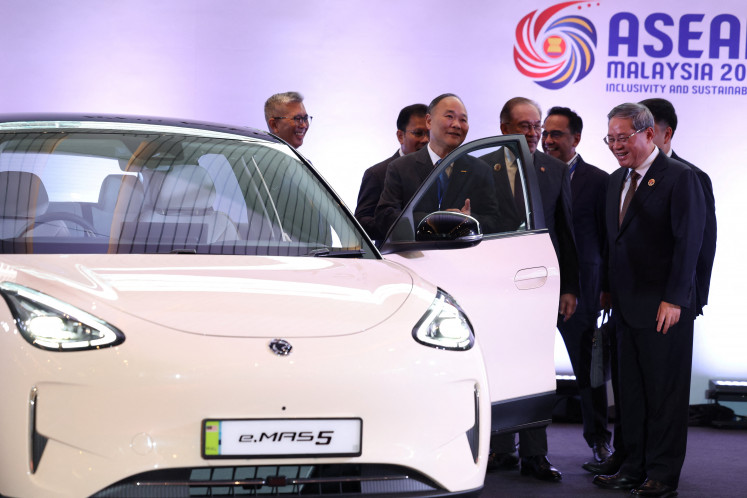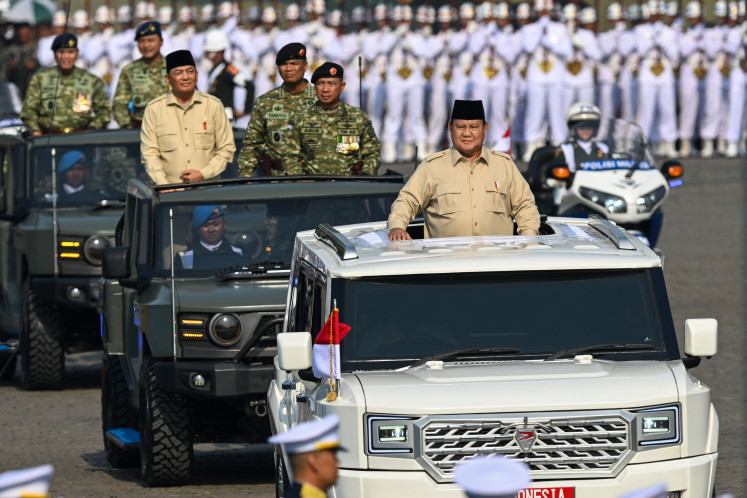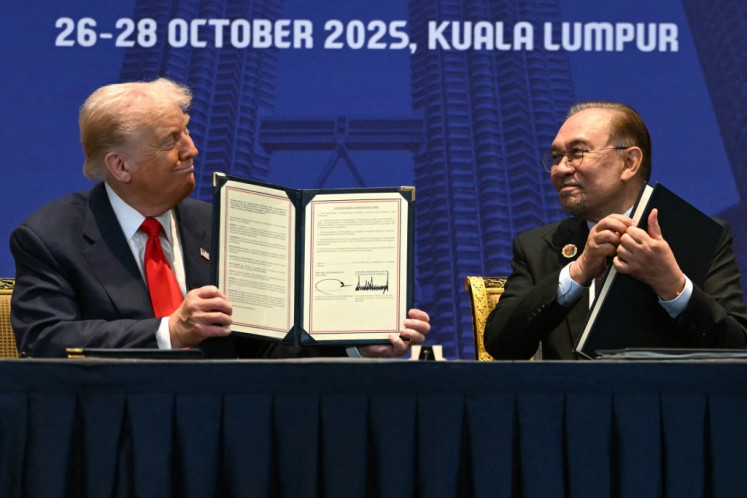Popular Reads
Top Results
Can't find what you're looking for?
View all search resultsPopular Reads
Top Results
Can't find what you're looking for?
View all search resultsUN-modeled simulation helps youths understand disaster
With nearly 40 percent of the population living in disaster-prone areas across the country, efforts to reduce dangers must involve all of the Indonesian people
Change text size
Gift Premium Articles
to Anyone
W
ith nearly 40 percent of the population living in disaster-prone areas across the country, efforts to reduce dangers must involve all of the Indonesian people.
“It is not easy for the government to reduce disaster risks that potentially affect 90 million people in the country,” National Agency of Disaster Management (BNPB) deputy for emergency response Dody Ruswandi said in Jakarta on Monday.
Dody was speaking during a Model United Nations simulation (MUN) event on disaster management, held by the US Embassy and the Indonesian Student Association for International Studies (ISAFIS) at @america. The event was attended by 238 senior high schools and universities from throughout Jakarta.
The MUN simulation is one of the educational programs the US Agency for International Development (USAID) is currently working on. The program aims to help build a culture of safety and resilience.
This is one of five major priority areas in the Hyogo Framework Agreement for Actions, which was signed in 2005 by 163 countries including Indonesia and the US.
The other four priorities are — making disaster risk reduction a national and local priority; improving risk information and early warning systems; reducing risks in key sectors; and strengthening preparedness and responses.
Indonesia ranks 12th among countries that have a high fatality risk from multiple hazards. Located in the ring of fire and Alpide belt it is in one of the most seismic regions in the world, where earthquakes, volcanos, floods, forest fires and landslides take place.
With 129 active volcanoes, around 40 percent of a total 230 million people in Indonesia live in high-risk natural disaster areas.
“With increasing global climate change and environmental degradation, the trend of disasters in our country will increase in the future as well,” Dody said.
He added that 70 percent of catastrophes in Indonesia are hydro-meteorological.
Globally, 262 million people were affected by climate disasters in 2004, with more than 90 percent of them in developing countries. As such, it is imperative that all countries cooperate, focus and collaborate on disaster management.
“The fundamental idea is to highlight the fact that we really have to work together to deal with problems in the world, including natural disasters. [An international cooperation] is critical to address this problem,” US Ambassador Scot Marciel told journalists.
During the simulation, participants experienced what it would be like if they were in the United Nations. Attendees were encouraged to actively participate in the debate and raise concerns about natural disasters. Students acted as if she or he was the representative of a country who sought to manage natural disasters through multilateral diplomacy.
Sarah, a student from University of Padjadjaran’s School of International Relations, questioned disaster management and policy in Indonesia during the simulation.
“Why does Indonesia not have disaster preparations or simulations for floods or earthquakes like in Japan?” Paulina, from University of Pelita Harapan’s School of International Relations, asked.
ISAFIS President 2012 Lukman Oesman said the MUN simulation helped students to cultivate their debating skills and improved their knowledge of natural disasters. USAID regional advisor of foreign disaster assistance Harlan Hale said the agency wanted to focus on helping countries build a culture of safety and resilience, as this could change the way people thought as individuals, households and communities.
“Without changing the way we think, the rest of these things will be very hard to achieve,” he said.










